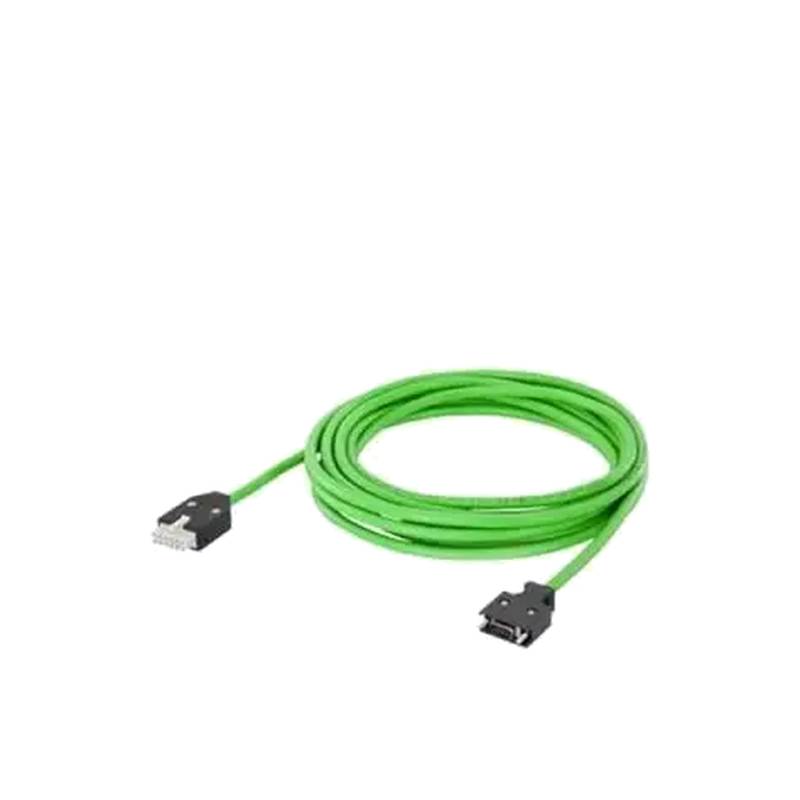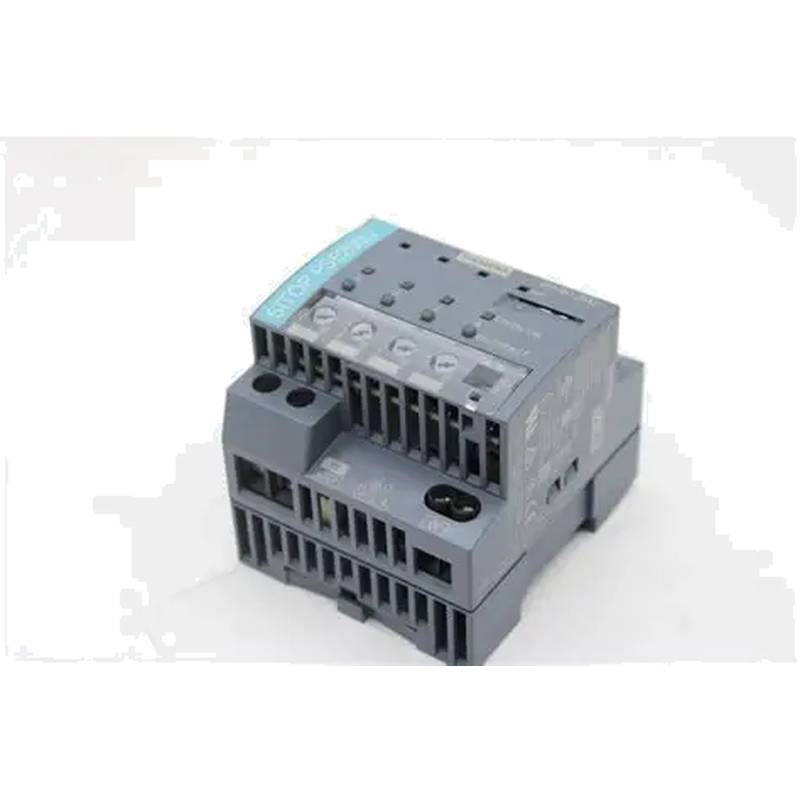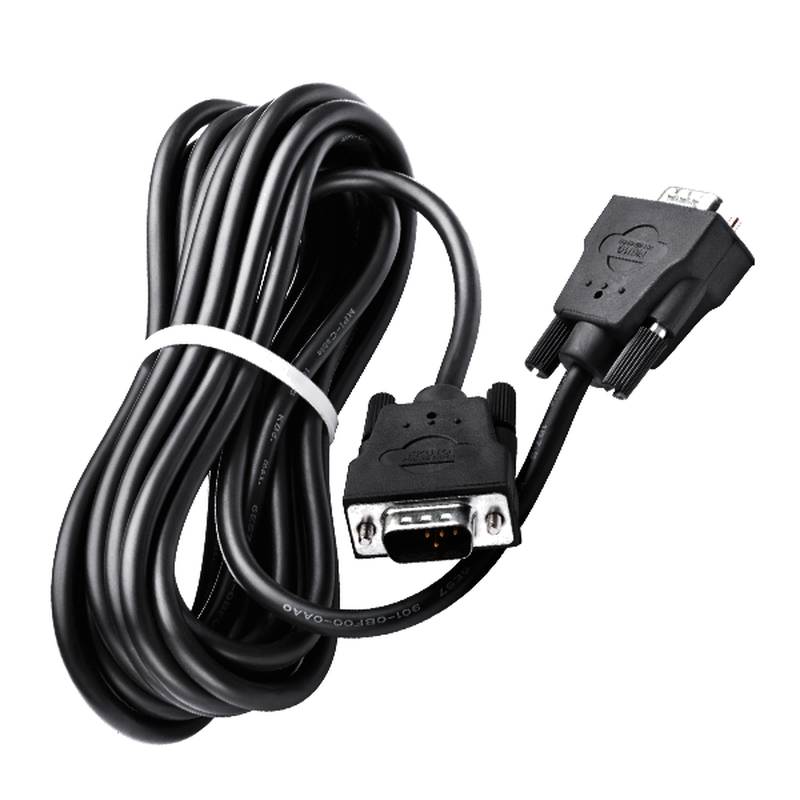
The Siemens 5SY6116-8CC Miniature Air Circuit Breaker (MCB) is a robust, single-pole, 16-ampere device engineered for reliable motor protection. Its primary advantage lies in its precise tripping characteristics, safeguarding motors from overcurrents and short circuits, thereby extending operational life and minimizing downtime. Key features include a high breaking capacity for fault current management and a thermal-magnetic release mechanism for dependable protection against overload and short-circuit conditions. Essential technical parameters include a rated voltage of 230/400V AC, an impulse withstand voltage of 4kV, and a frequency of 50/60Hz, ensuring compatibility with standard industrial power grids.
Product Specifications
| Specification | Value |
| :---------------------- | :--------------------- |
| Product Type | Miniature Circuit Breaker |
| Manufacturer | Siemens |
| Series | 5SY6 |
| Pole Configuration | 1P (Single Pole) |
| Rated Current (In) | 16 A |
| Rated Voltage (Ue) | 230/400 V AC |
| Tripping Characteristic | C |
| Breaking Capacity (Icn) | 6 kA |
| Frequency | 50/60 Hz |
| Protection Type | Motor Protection |
| Product Code | 5SY6116-8CC |
| Protection Class | IP20 |
| Insulation Voltage (Ui) | 500 V AC |
| Impulse Withstand Voltage | 4 kV |
| Operating Temperature | -25 to +45 °C |
| Mounting Type | DIN Rail |
Core Features & Market Positioning
The Siemens 5SY6116-8CC stands out in the competitive landscape due to its specialized design for motor protection, offering superior thermal overload sensitivity compared to general-purpose MCBs. This is achieved through its specific tripping curve and the integration of a thermal-magnetic release, providing a dual-action defense mechanism. Its position in the market is further solidified by Siemens' reputation for quality and reliability in industrial automation and electrical protection components. The 'C' curve characteristic ensures it can handle the typical inrush current of motors without nuisance tripping, while still providing rapid protection against damaging short circuits.
Key Application Scenarios
This MCB is ideally suited for protecting individual electric motors in a wide array of industrial applications, including pump systems, conveyor belts, fans, and machine tools. Its single-pole design is optimal for single-phase motor circuits or for protecting one phase in a three-phase system where specific single-pole protection is mandated or preferred. It is frequently deployed in control panels and distribution boards within manufacturing plants, HVAC systems, and water treatment facilities where reliable motor operation is critical to process continuity.
Practical System Integration Guidance
Integrating the Siemens 5SY6116-8CC into an electrical system is straightforward, utilizing standard DIN rail mounting for quick installation in control cabinets. Proper wiring involves connecting the incoming power supply to the line terminals and the load (motor circuit) to the load terminals. Ensure that the breaker's rated current (16A) and breaking capacity (6kA) are appropriate for the motor's full load current and the prospective short-circuit current at the point of installation. For motor circuits, it's crucial to coordinate the MCB with appropriate overload relays or to ensure the MCB's internal thermal element is correctly sized for the motor's service factor and operating conditions.
Operation and Risk Mitigation
The Siemens 5SY6116-8CC operates by employing a thermal element to detect sustained overloads and a magnetic element to respond instantaneously to high fault currents. Overload protection is achieved when excessive current causes the bimetallic strip to heat up and bend, eventually tripping the mechanism. Short-circuit protection is handled by an electromagnet that activates rapidly when current exceeds a predefined threshold. To mitigate risks, always ensure the MCB is de-energized before installation or maintenance. Proper labeling of circuits and adherence to local electrical codes are essential for safe operation and fault prevention.
Scalability & Long-Term Value
While the 5SY6116-8CC is a specific component, its value extends through its compatibility within the broader Siemens industrial ecosystem. It can be seamlessly integrated into larger control systems and supervisory control and data acquisition (SCADA) platforms. For future scalability, users can opt for circuit breakers with higher current ratings or additional poles from the same Siemens 5SY series, ensuring backward compatibility and a consistent protection philosophy. Its robust construction and adherence to international standards contribute to a long operational lifespan, reducing the total cost of ownership.
Frequently Asked Questions (FAQs)
1. What is the primary function of the Siemens 5SY6116-8CC?
This MCB is designed for protecting electric motors.
It safeguards against overloads and short-circuit events.
This ensures motor longevity and operational reliability.
2. What are the key technical specifications of the 5SY6116-8CC?
It's a single-pole, 16A breaker.
It operates at 230/400V AC with a 6kA breaking capacity.
It features a 'C' curve tripping characteristic for motor applications.
3. How does the thermal-magnetic release work in this breaker?
The thermal element detects sustained overcurrents.
The magnetic element responds instantly to high fault currents.
Together, they provide comprehensive protection against electrical faults.
4. Can the 5SY6116-8CC be used for three-phase motor protection?
It's a single-pole breaker, ideal for single-phase motors.
For three-phase motors, three individual single-pole breakers can be used.
Alternatively, consider a three-pole MCB for full three-phase protection.
5. What does the 'C' tripping characteristic signify?
'C' curves are designed for inductive loads like motors.
They allow for higher inrush currents during motor startup.
This prevents nuisance tripping while ensuring fault protection.
6. What is the breaking capacity (Icn) of this MCB?
The breaking capacity is 6 kA (kiloamperes).
This rating indicates the maximum fault current it can safely interrupt.
Ensure this exceeds the prospective short-circuit current at installation.
7. How is the 5SY6116-8CC installed in an electrical panel?
It mounts onto a standard 35mm DIN rail.
Connections are made via screw terminals for power input and output.
Proper wiring according to electrical codes is essential.
8. What is the difference between this and a general-purpose MCB?
This breaker is specifically optimized for motor starting currents.
Its tripping sensitivity is tailored for motor protection needs.
General-purpose MCBs have broader, less specialized tripping curves.
9. Does this breaker offer overload protection?
Yes, its thermal element provides overload protection.
It trips if the current exceeds the rated value for an extended period.
This prevents motor winding damage from overheating.
10. Is this product compatible with Siemens' other industrial automation components?
Yes, it integrates well within Siemens' electrical distribution systems.
It can be part of larger control panels and SCADA systems.
Siemens components generally offer high interoperability.






















